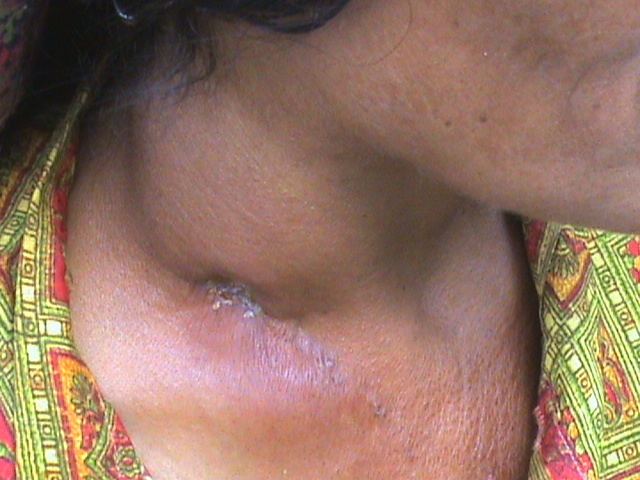Specialty infectious disease ICD-9-CM 017.2 | ICD-10 A18.2 | |
 | ||
Tuberculous lymphadenitis (or tuberculous adenitis) is a chronic specific granulomatous inflammation of the lymph node with caseation necrosis, caused by infection with Mycobacterium tuberculosis or Mycobacterium bovis.
The characteristic morphological element is the tuberculous granuloma (caseating tubercule). This consists of giant multinucleated cells and (Langhans cells), surrounded by epithelioid cells aggregates, T cell lymphocytes and fibroblasts. Granulomatous tubercules eventually develop central caseous necrosis and tend to become confluent, replacing the lymphoid tissue.
Stages of tubercular lymphadenitis:
- Lymphadenitis
- Periadenitis
- Cold abscess
- 'Collar stud' abscess
- Sinus
Tuberculous lymphadenitis is popularly known as collar stud abscess, due to its proximity to the collar bone and superficial resemblance to a collar stud, although this is just one of the five stages of the disease. The characteristic morphological element is the tuberculous granuloma (caseating tubercule): giant multinucleated cells (Langhans cells), surrounded by epithelioid cells aggregates, T cell lymphocytes and few fibroblasts. Granulomatous tubercules evolve to central caseous necrosis and tend to become confluent, replacing the lymphoid tissue.
Treatment
Incision drainage with proper evacuation of the fluid followed by anti-tubercular medication.
